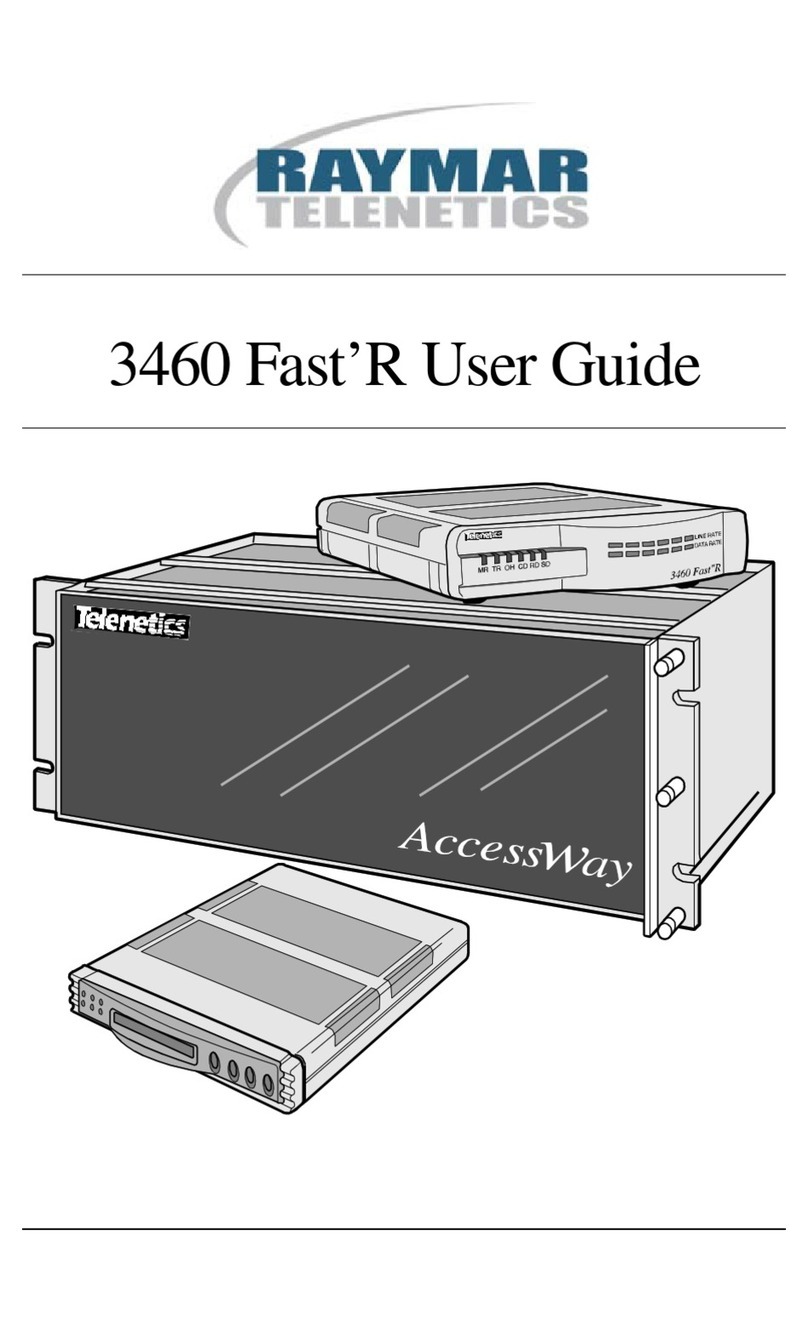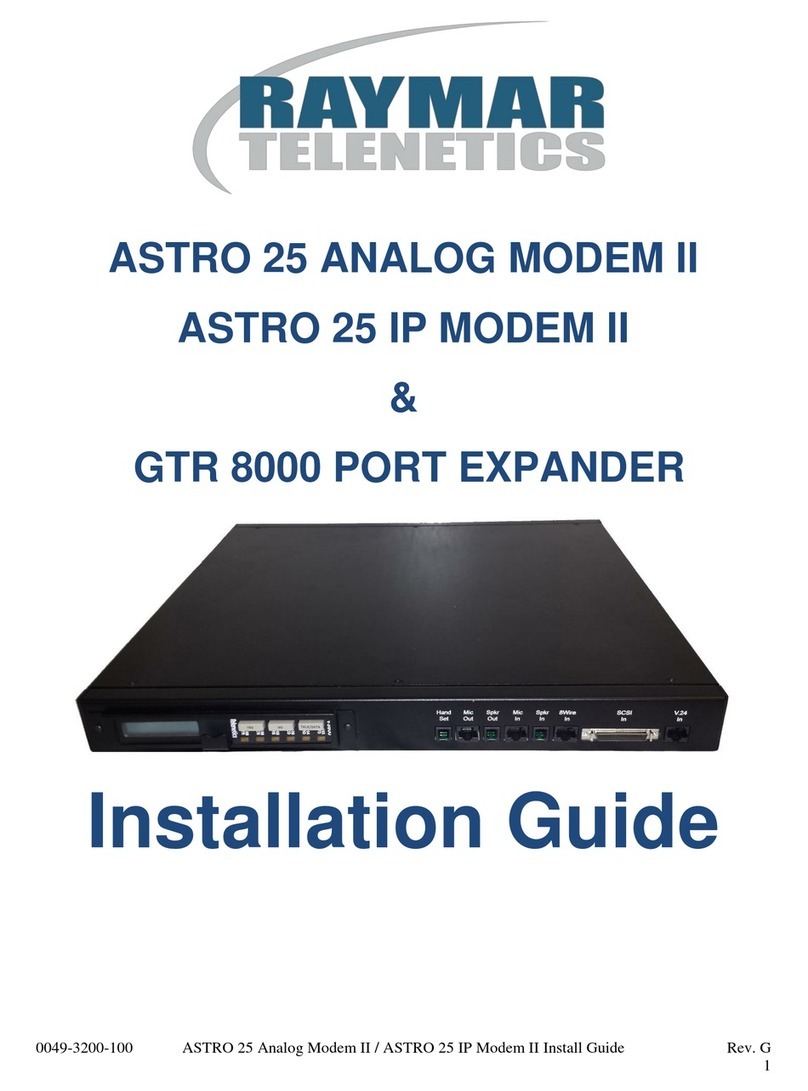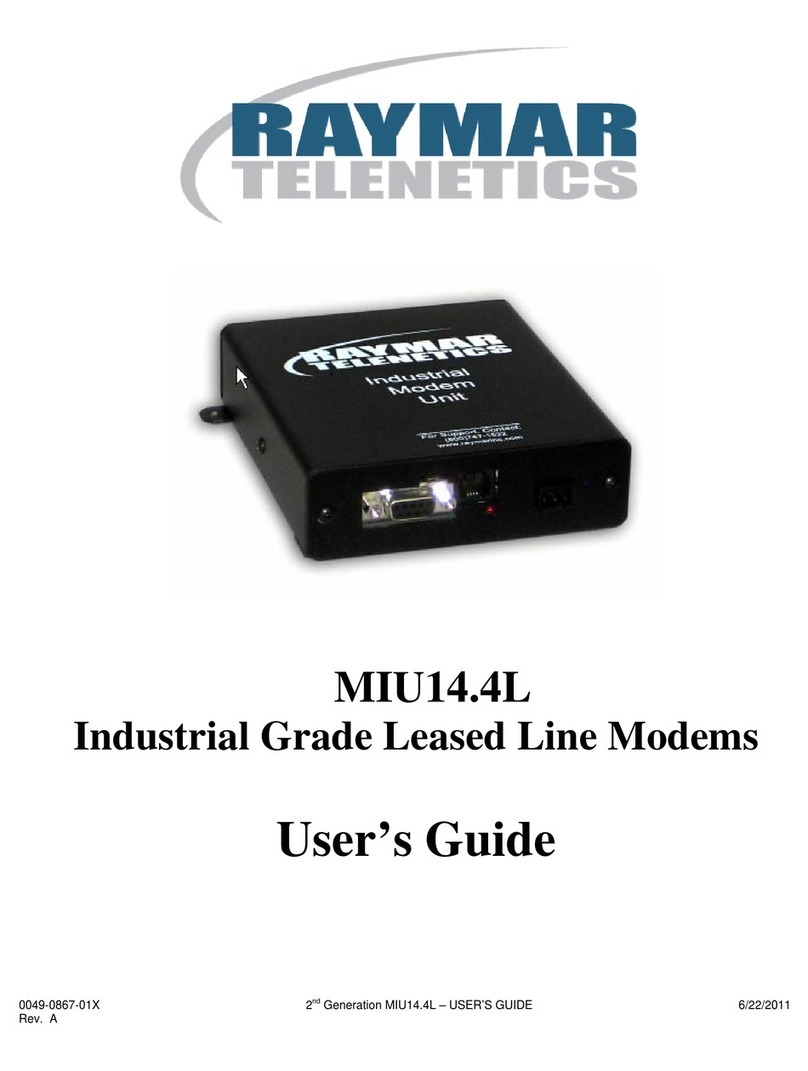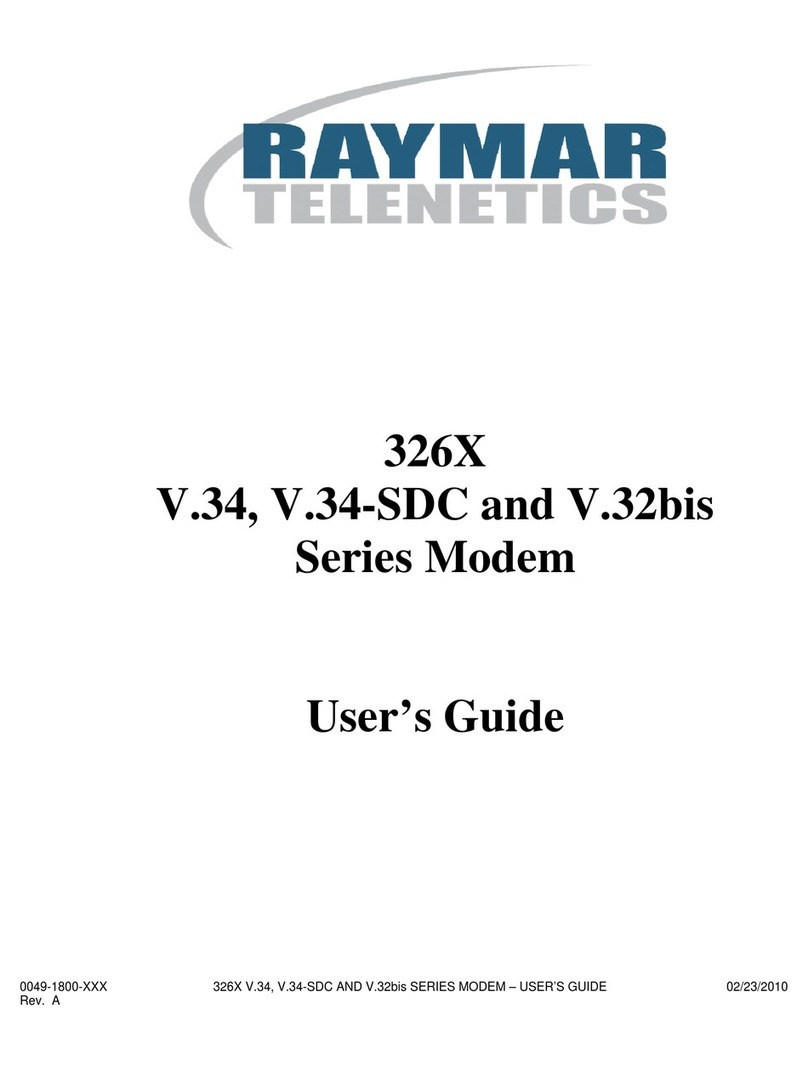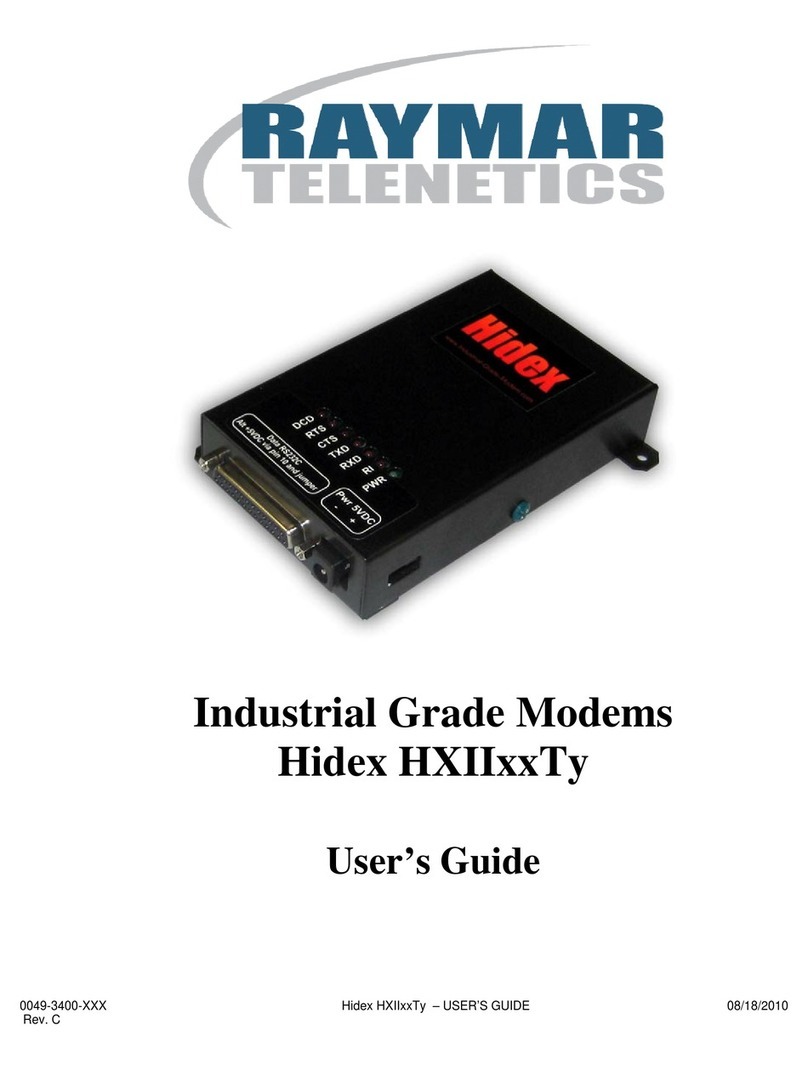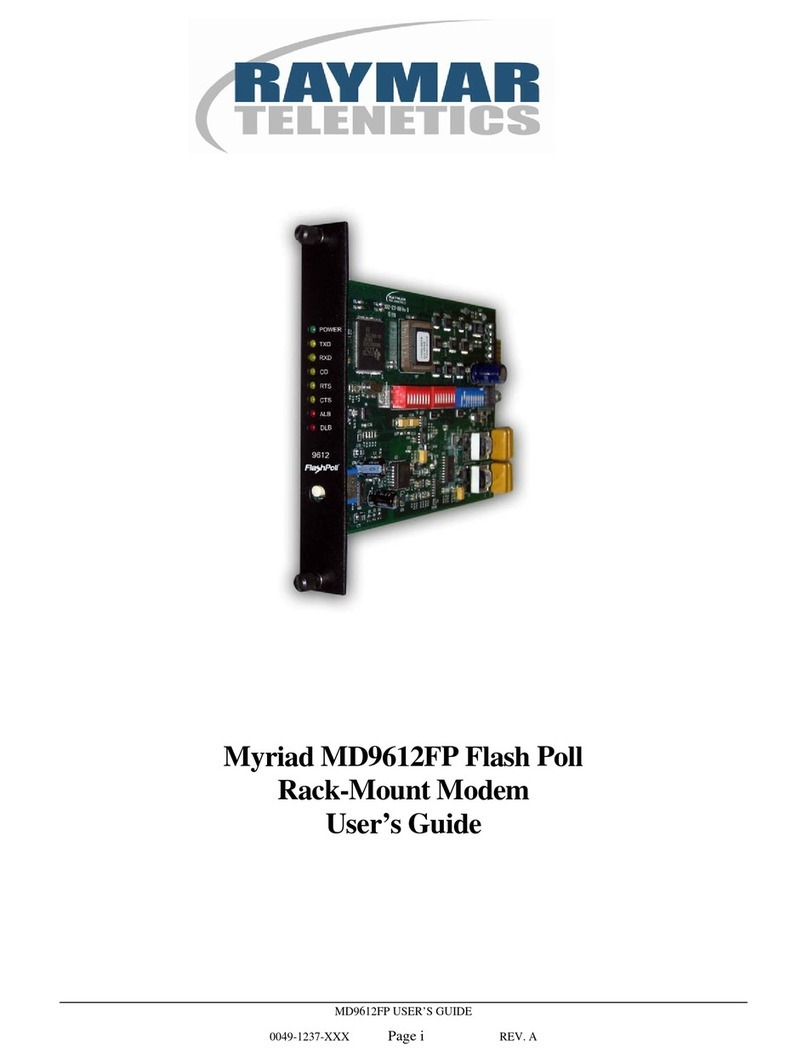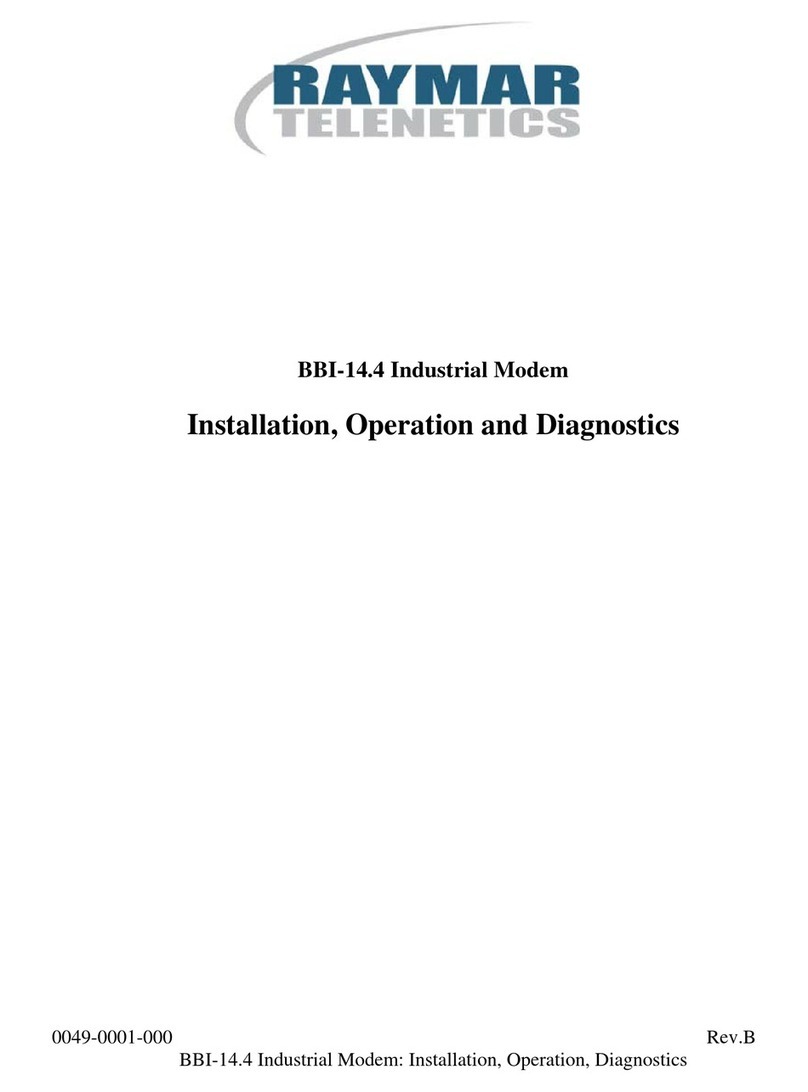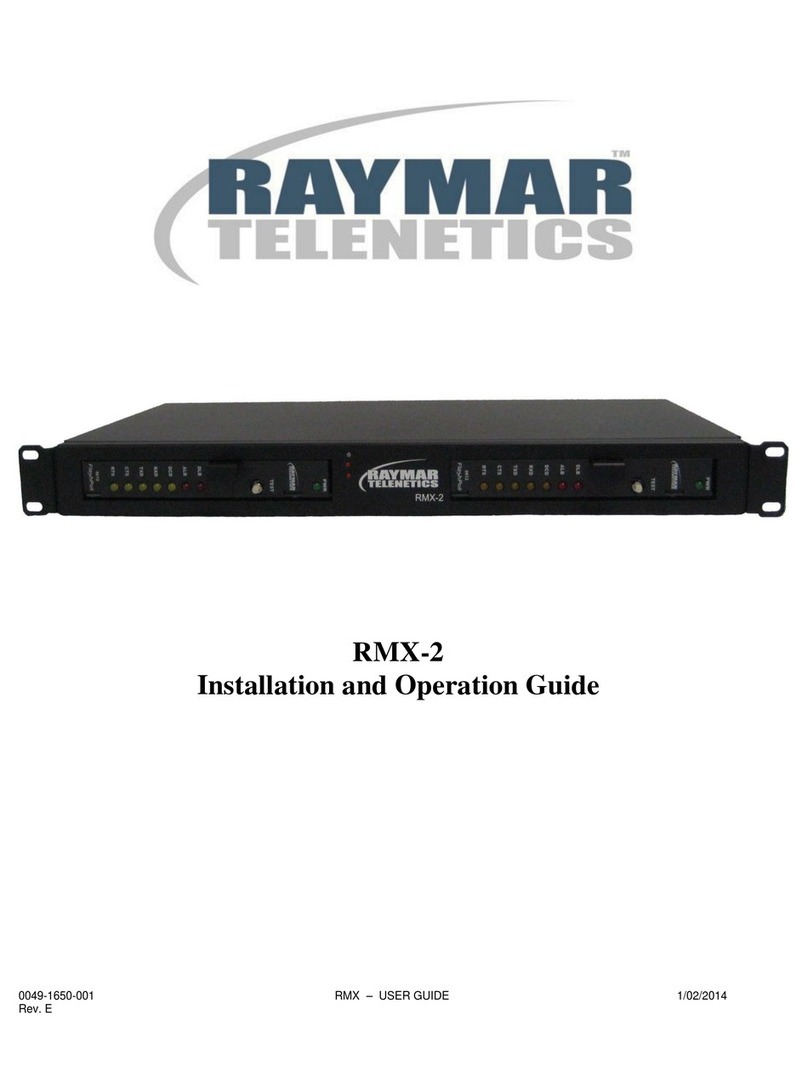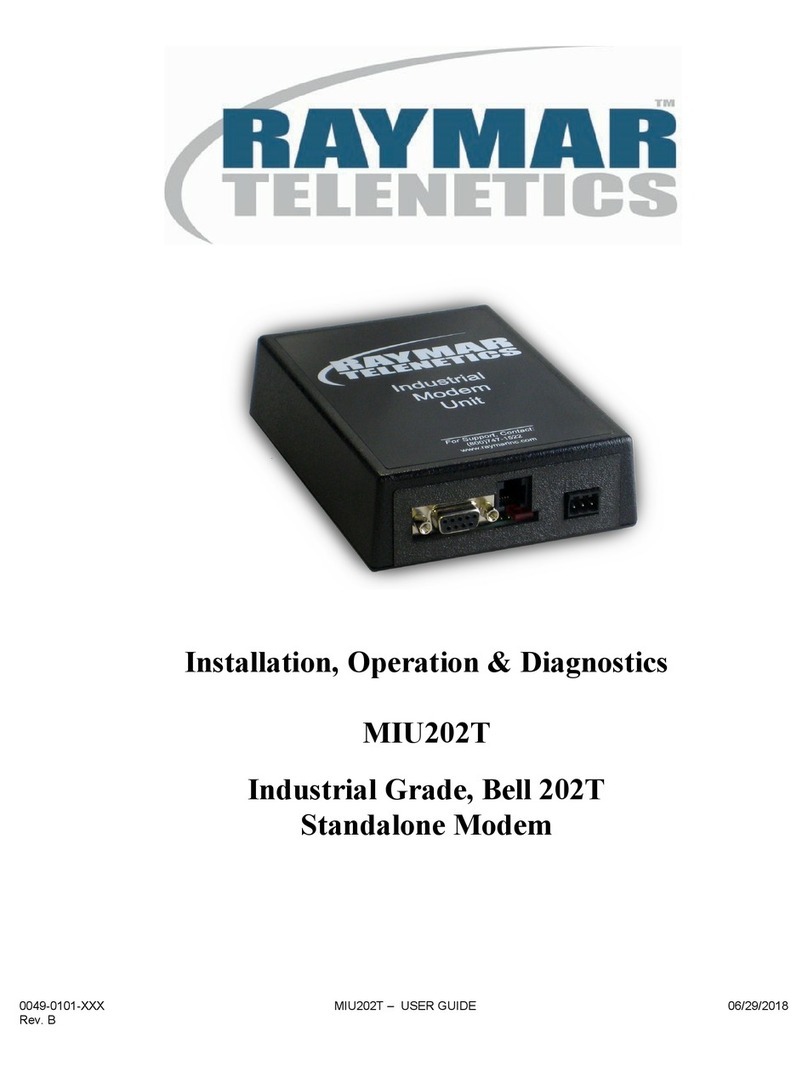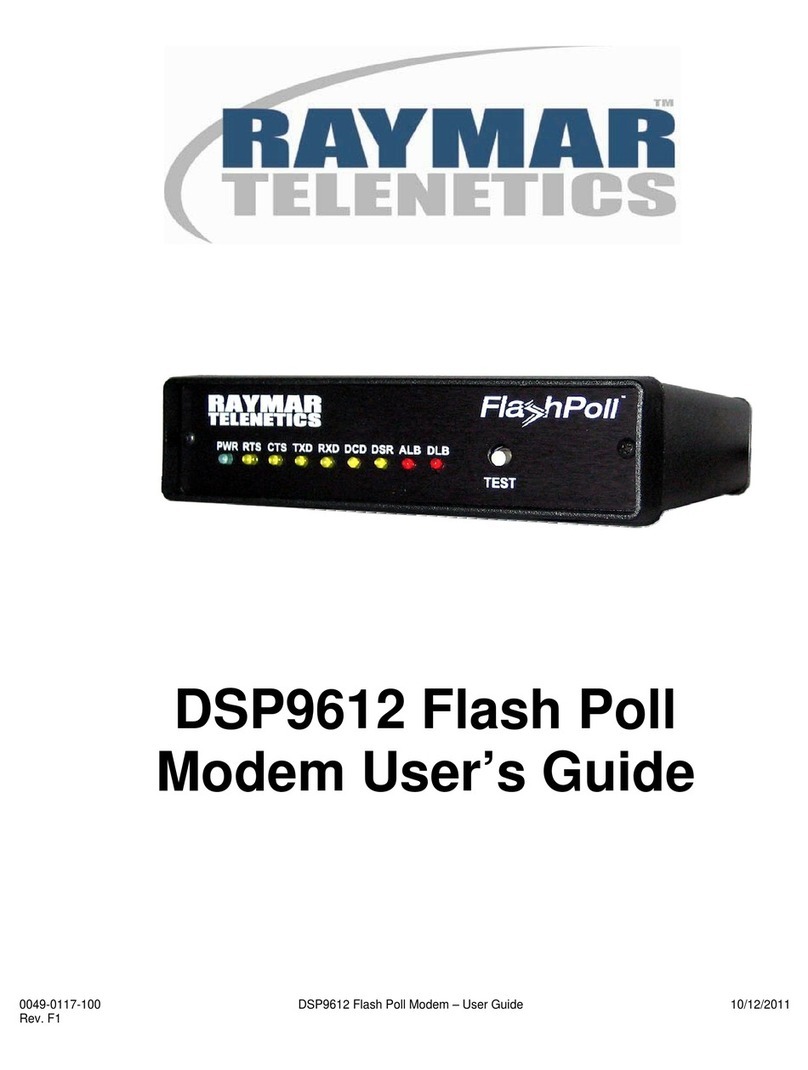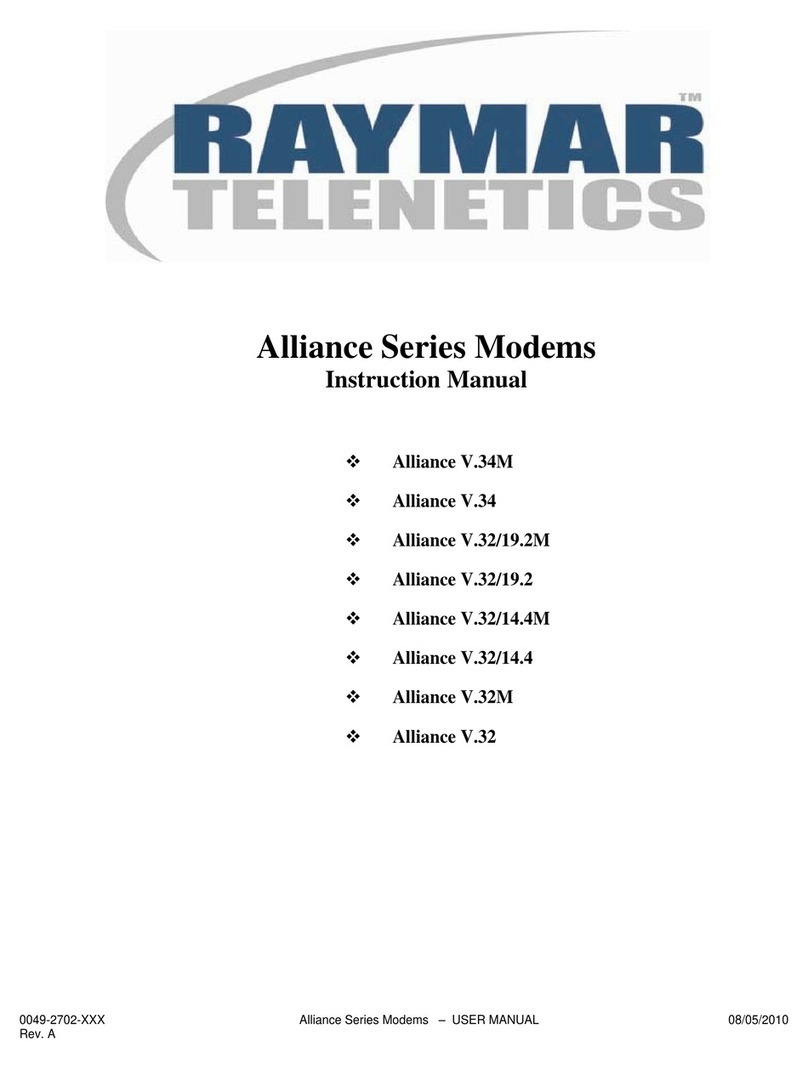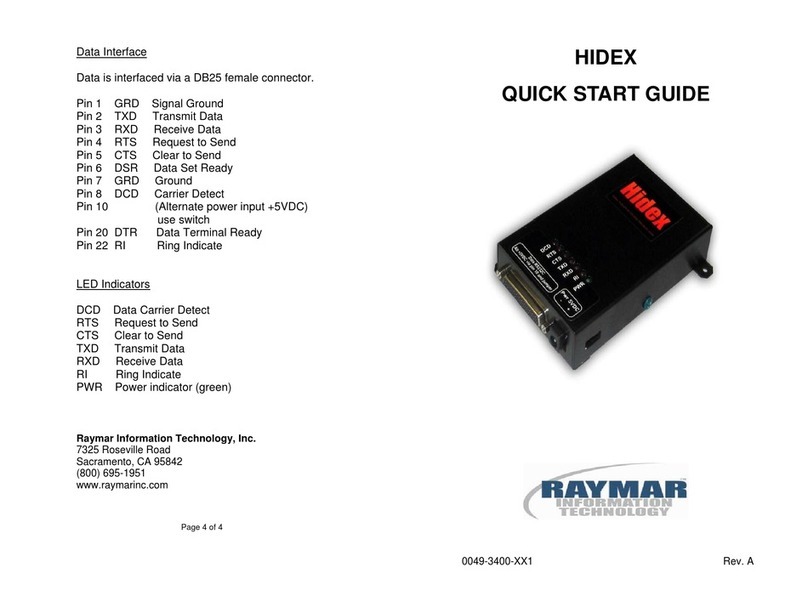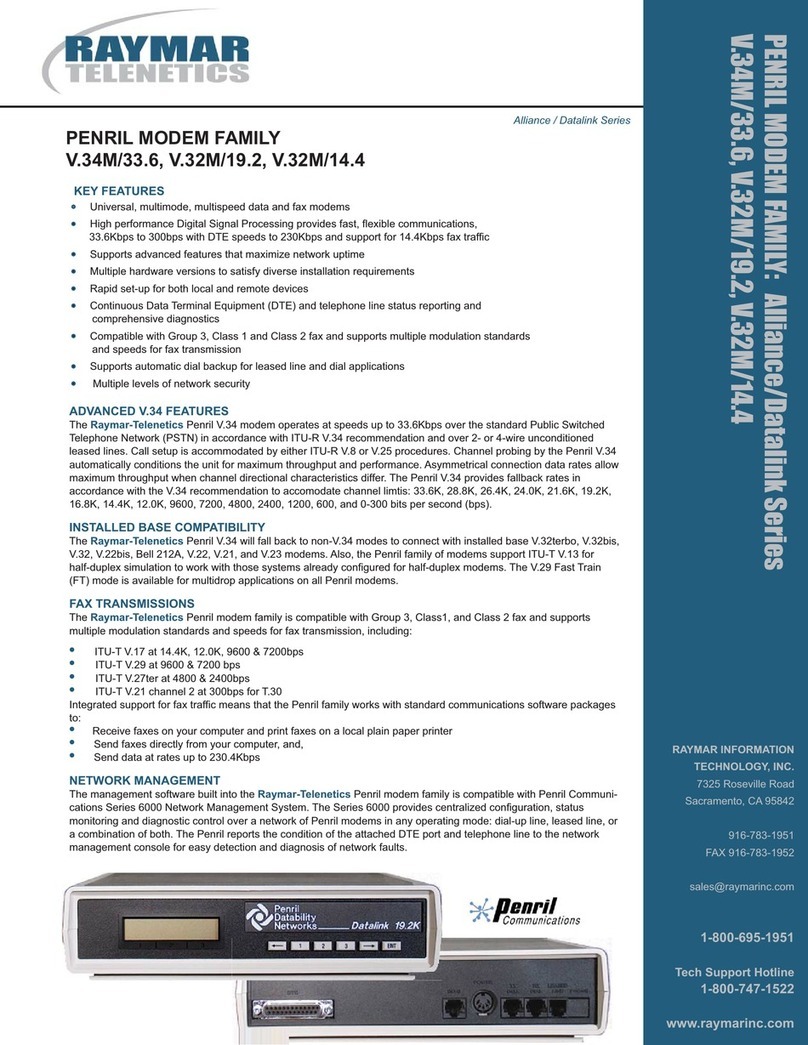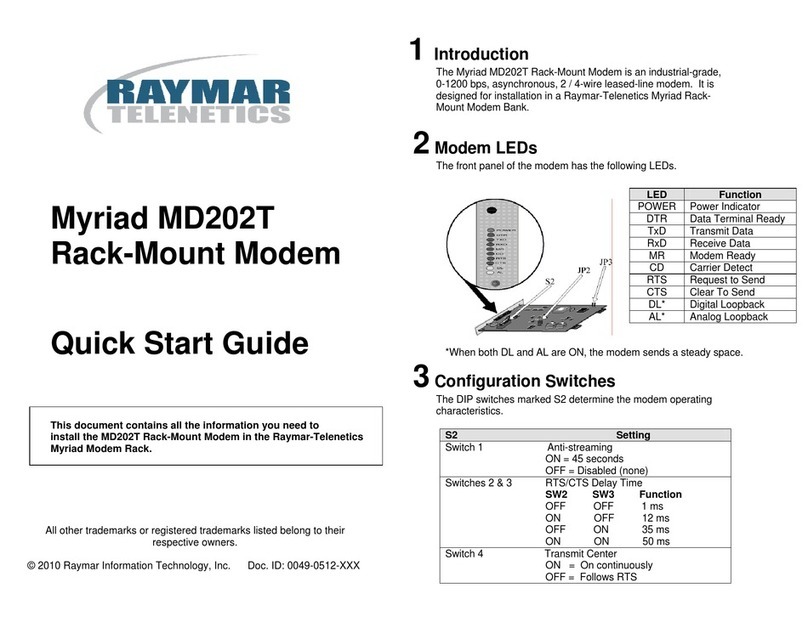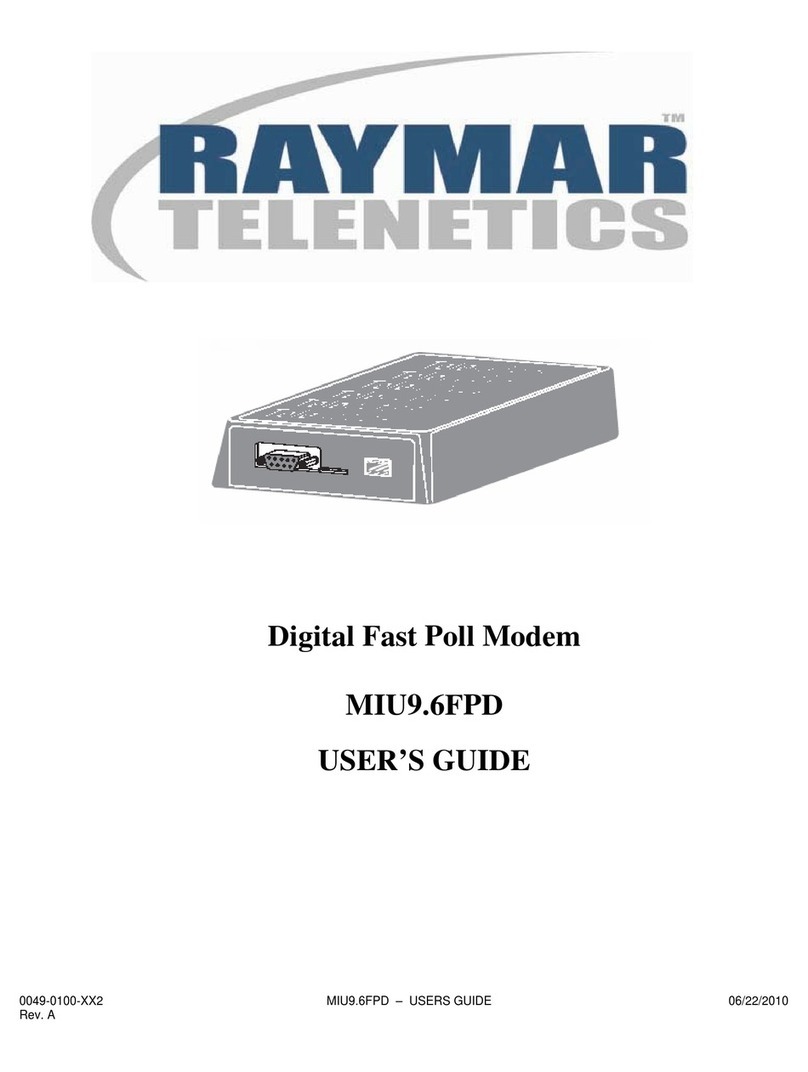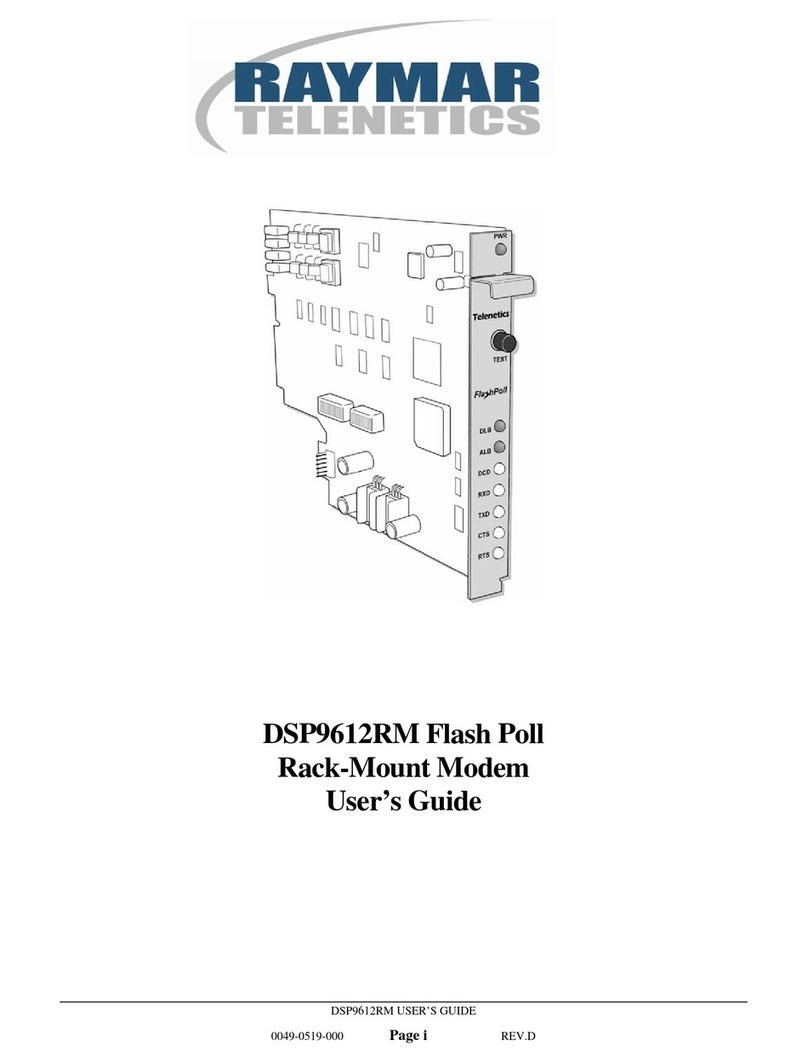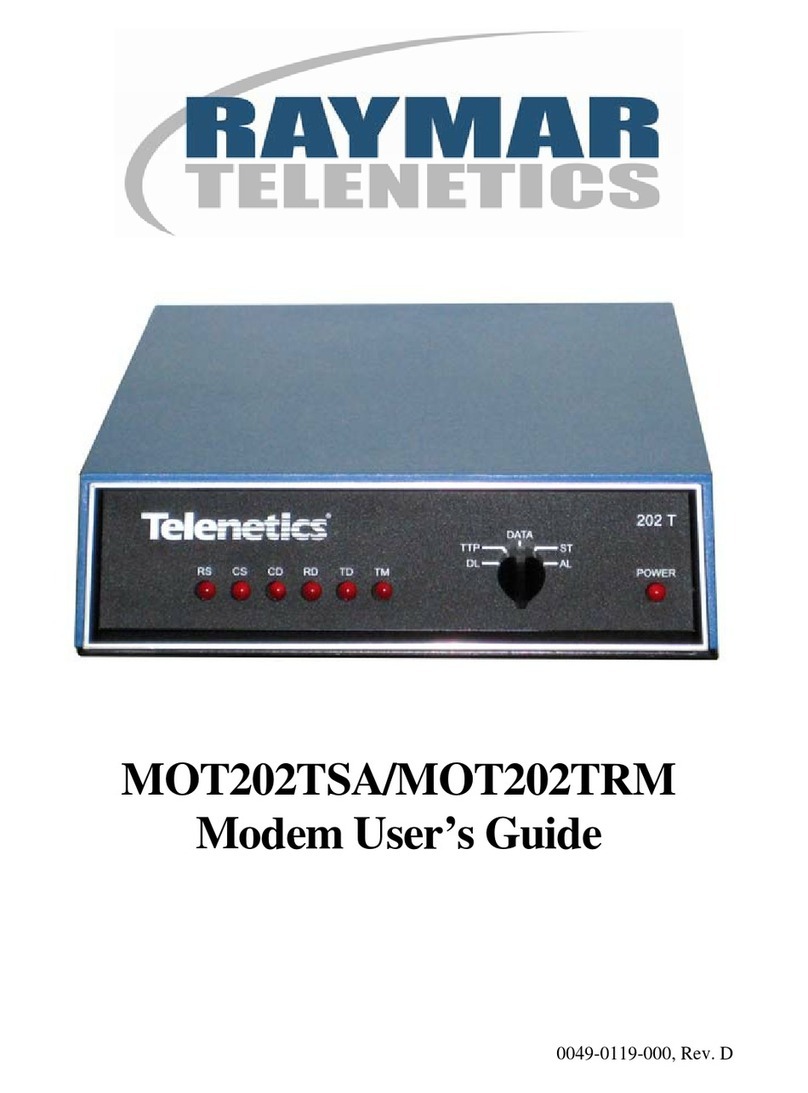
0049-0300-XXX MIU/Power Port Series – USER GUIDE 08/04/2010
Rev. A Page 2 of 26
2. PRODUCT OVERVIEW
The MIUPowerPortX.X Series are industrial grade dial and leased line modems for connection to
the Public Switched Telephone Network. They can be powered from a wide range of AC and DC
power supplies, they are internally surge protected on both the power and analog lines, and they
will operate in temperatures from -40 to +85º C.
Internally, each unit consists of a baseboard and a communication module. The baseboard
includes the power supply regulation and surge protection. The communication module is a
Raymar-Telenetics™ Pony Express™ Dial Modem Module.
The MIU PowerPort is packaged specifically for the harsh environments found in utility
substations, industrial facilities and remote sites. Though functionally similar to commercial
modems, the MIU PowerPort includes special features that make it particularly well suited for
utility and industrial applications.
Environment: The MIU PowerPort has been designed specifically for use in harsh
environments. In addition to an extended temperature range (-40 to +85º
C), the MIU includes surge, shock, vibration, and safety features superior
to those of conventional commercial modems.
Power Supply: The MIU PowerPort can be powered from a range of AC and DC power
sources: +5 VDC, 12 VDC Battery, 7 to 16 VAC or 8 to 16 VDC. An
optional 120 VAC wall transformer is available from Raymar-Telenetics.
Low Power: The MIU PowerPort dial modems can be configured to enter into a
“power down” mode. In this mode, an MIU PowerPort will consume only
a small fraction of its active power while waiting for either controller or
telephone line activity.
Industrial: The MIU PowerPort is packaged in a rugged, compact, non-metallic
(ABS) enclosure. Designed for unmanned locations, the MIUs do not
include the array of pushbuttons and LEDs normally associated with
consumer-type modems to increase reliability and decrease power
consumption. Configuration is by dip switches and/or software (“AT”)
commands. Standard industrial connectors for data, analog and power
interfaces allow reliable interconnection to other industrial components.
